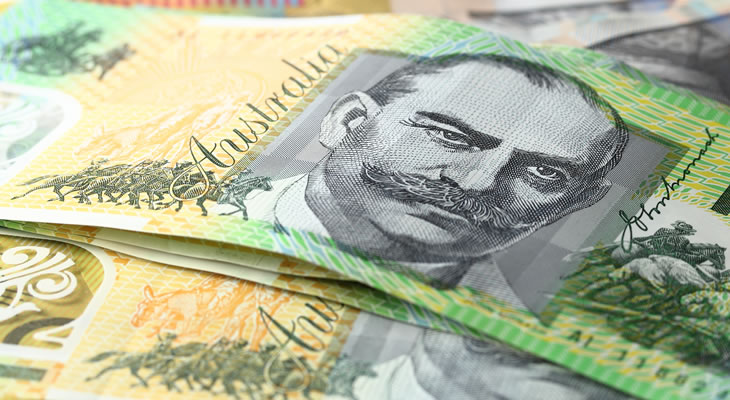The GBP AUD exchange rate has improved on Thursday’s afternoon session, with the Pound rising to 1.73 against the Australian Dollar.
Along with continued support from the CBI news, Sterling has also been supported by a sharp decline in the value of the Euro.
This has raised demand for stabler currencies like the Pound; the trigger was European Central Bank (ECB) President Mario Draghi indicating that confining monetary policy was to continue indefinitely.
(First published 11:47, April 27th, 2017)
The Pound to Australian Dollar exchange rate has hit 1.72 today, the best since late September.
This strong Sterling advance Sterling could prove short-lived, however, if UK and EU officials are unable to agree on trade.
The Confederation of British Industry (CBI) has focused on the issue, with Director General Carolyn Fairbairn warning;
‘Our long-term trading relationship is the real prize, dwarfing any potential divorce settlement. [Comparing] a one-off EU divorce bill of [potentially] tens of billions of Euros, with EU-UK trade worth well over €600bn every year, the economic case for making rapid progress on a trade agreement is clear’.
Fairbairn has been hopeful for an upcoming meeting of EU heads;
‘Europe’s leaders will be…at the EU summit to agree a common response to the article 50 letter. In these discussions, it’s vital that economics cut through the politics. So our message to European firms and policymakers is “keep on talking, keep on listening”’.
On the UK side, Fairbairn has criticised the ‘no deal is better than a bad deal’ stance of Theresa May;
‘Without an agreement, we’d lose together. For both sides, leaving the negotiating table without a deal shouldn’t be “Plan B” but “Plan Z”. Whether it’s tariffs or regulation, a no deal scenario would have chilling effects on both sides of the Channel’.
Just how closely June’s election winner heeds these warnings could strongly influence the GBP AUD exchange rate – the ‘Hard Brexit’ approach of leaving without a trade deal could significantly weaken Sterling.
The price of iron ore may remain a strong influence on the Australian Dollar in the future, particularly if recent pessimism seeps through to actual price drops.
From late March, the cost of iron ore has fallen from around $90 per tonne to almost $70 per tonne. This could just be the tip of the iceberg, however, according to BMI Research estimates.
The company predicts that iron ore will fall to or below $70 in 2017, to $55 in 2018 and to have bottomed out near $46 by 2021.
The Australian Treasury has estimated that if iron ore does dip under $55 per tonne, it could leave a hole of billions in the national budget.
Iron ore costs bear close watching in the future, especially if they continue to slide in line with estimates.
While Australia is trying to move away from having a mining export-focused economy, the transition has been slow. This means that commodity costs are likely to remain influential on the AUD for the foreseeable future.
Recent Interbank GBP AUD Exchange Rates
At the time of writing, the Pound to Australian Dollar (GBP AUD) exchange rate was trading up at 1.72 and the Australian Dollar to Pound (AUD GBP) exchange rate was trading down at 0.57.


Comments are closed.